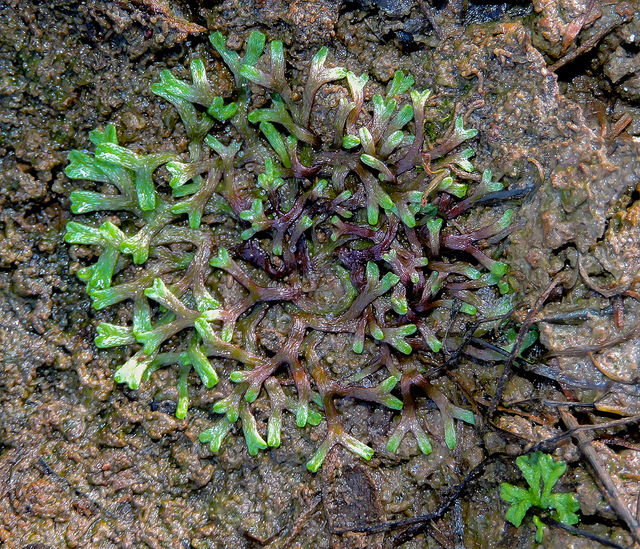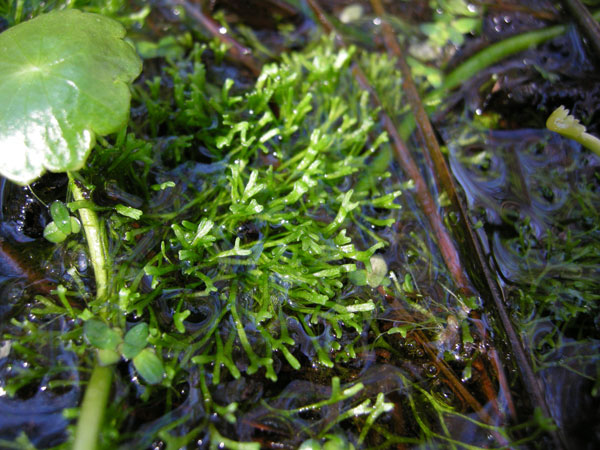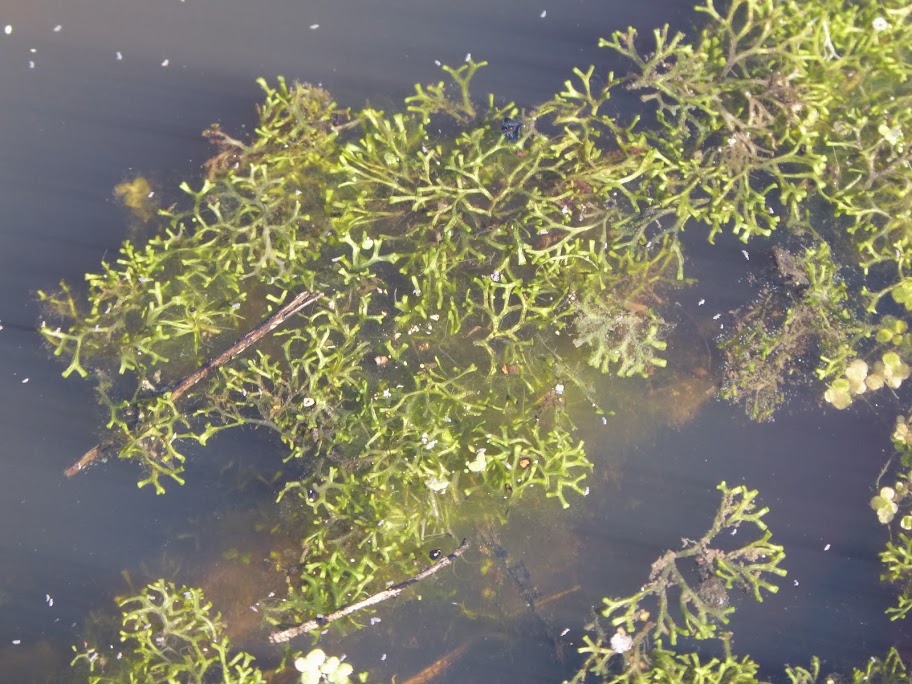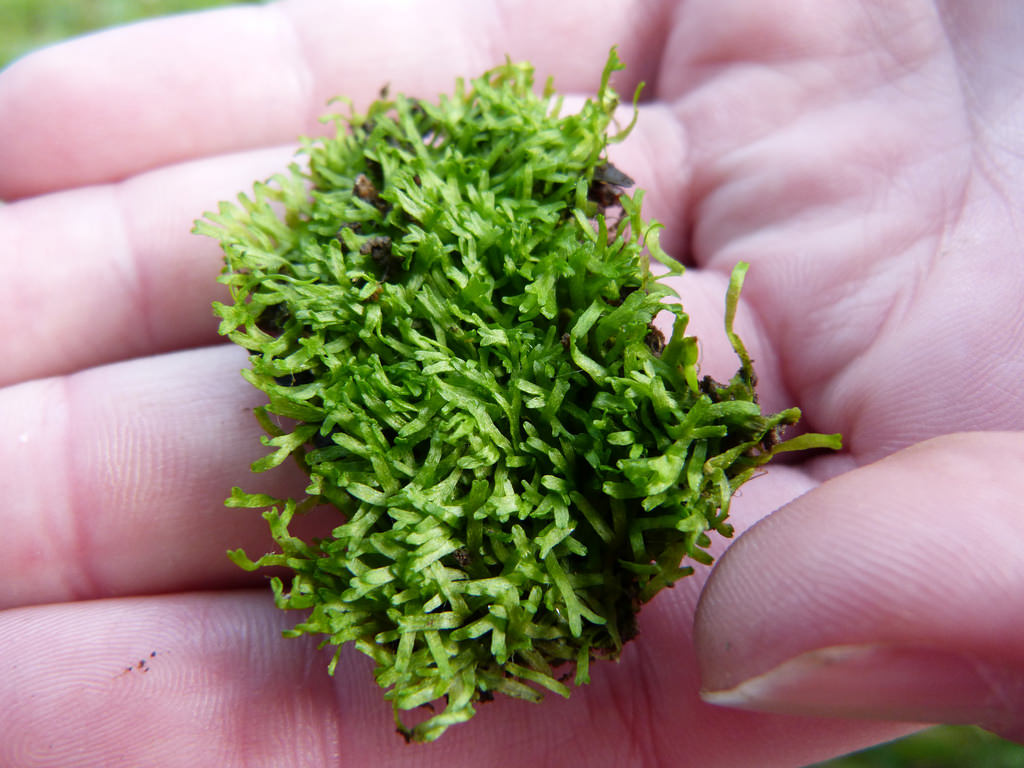Map Snapshot













31 Records
Status
Common and widely reported. Apparently the most common species in submerged aquatic habitats, the other species being more common on damp soil.
Description
The thallus of Riccia fluitans is dichotomously branched, relatively thin and only a few millimeters wide. The plants may grow to a few centimeters in length. The plants are most often found submerged or floating below the water's surface in freshwater wetlands, ponds and lakes. It may also be found stranded on damp soil.
Where To Find
Found in freshwater habitats throughout Maryland, particularly the Coastal Plain.
Seasonality Snapshot
Source: Wikipedia
This article needs additional citations for verification. (May 2021) |
| Riccia fluitans | |
|---|---|
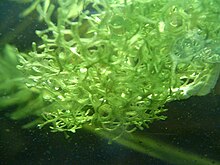
| |
| Scientific classification | |
| Kingdom: | Plantae |
| Division: | Marchantiophyta |
| Class: | Marchantiopsida |
| Order: | Marchantiales |
| Family: | Ricciaceae |
| Genus: | Riccia |
| Species: | R. fluitans
|
| Binomial name | |
| Riccia fluitans | |
Riccia fluitans, the floating crystalwort,[1] is an aquatic floating plant of the liverwort genus Riccia which is popular among aquarists as a retreat for young fry and is used in live-bearing tanks. It can be found floating in ponds, and often forms thick mats on and under the water surface.
It normally grows quickly at the surface. When kept about two to three inches below an ordinary fluorescent bulb or in a pond exposed to full sunlight, it will form dense, bright green mats. Any single branch or antler bud can reproduce into a large colony if the plant is kept in proper conditions. It normally floats, but can also be attached to underwater objects such as logs and rocks. It can be attached with plastic mesh.
Floating crystalwort is generally not compatible with duckweeds, as they cover the surface of the water quite rapidly, crowding the Riccia out. It is also easily overtaken by hair algae.
The species epithet fluitans is Latin for floating.[2]
References
[edit]- ^ Edwards, Sean R. (2012). English Names for British Bryophytes. British Bryological Society Special Volume. Vol. 5 (4 ed.). Wootton, Northampton: British Bryological Society. ISBN 978-0-9561310-2-7. ISSN 0268-8034.
- ^ Archibald William Smith A Gardener's Handbook of Plant Names: Their Meanings and Origins, p. 140, at Google Books
External links
[edit]- AquaHobby
- Krib discussions
- Natural Aquariums
 Media related to Riccia fluitans at Wikimedia Commons
Media related to Riccia fluitans at Wikimedia Commons
